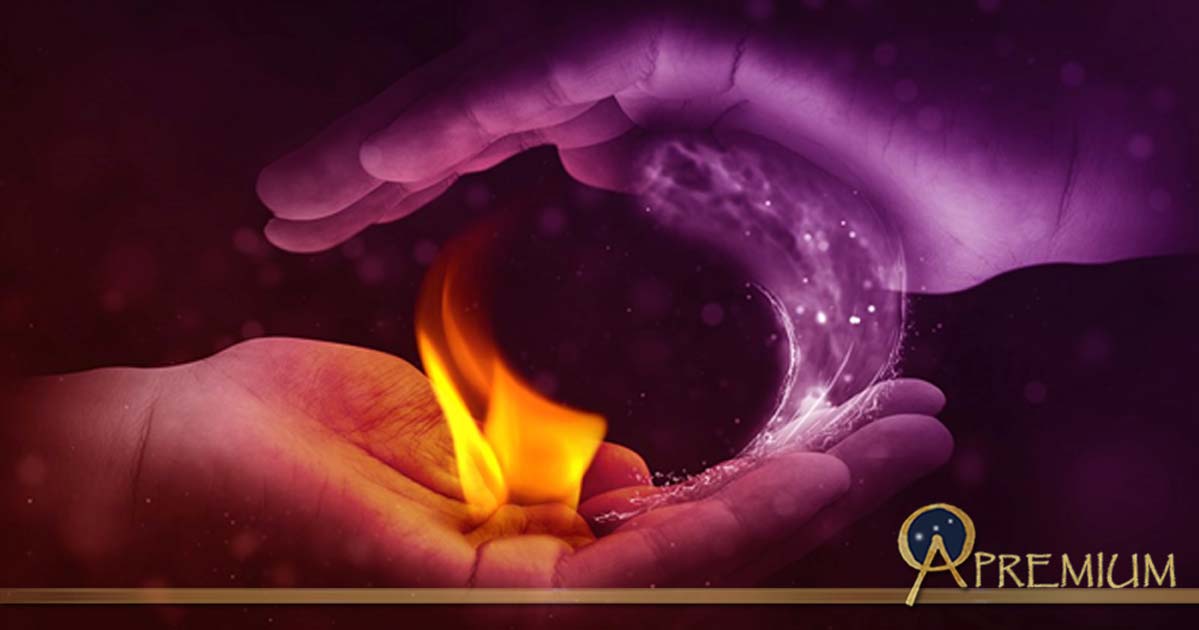The Relationship that Started it All and Changed the World: The Yin Yang & Diagram of the Supreme Ultimate
Chinese mythology and cosmology rest on the concept that the universe is shaped and maintained by two fundamental forces called yin and yang. They are opposite yet complementary forces that interact to form a dynamic system where the whole is greater than the assembled parts.
Yin represents the feminine, black, dark, north, passive, the moon goddess Changxi, earth, cold and softness—providing spirit to all things. Yin may also be represented by water, which symbolizes transformation, the tiger, the color orange, and a broken line in the trigrams of the I Ching (“Book of Changes”).

One of the symbols of the I Ching, trigrams with broken and unbroken lines. (BenduKiwi/CC BY-SA 3.0)
Yang is masculine, white, light, south, active, the sun god Xihe, heaven, warmth and hardness—providing form to all things. Yang may also be represented by fire, which symbolizes creativity, the dragon, the color blue, and a solid line trigram of the I Ching.
The principle of yin and yang is represented in Taoism by the Taijitu (“Diagram of the Supreme Ultimate”) which was first introduced by Song Dynasty philosopher Zhou Duni (1017–1073 CE).

18th-century representation of the taijitu of Zhao Huiqian (1370s) (Public Domain)
However, designs similar to the Taijitu have also been a standard ornamental motif in Iron-Age Celtic culture by the third century BCE, as well as in Etruscan art. This same principle also became the basis of many others representing these principles, such as the swastika— which is common to Hinduism, Buddhism, and Jainism.

Shield pattern of the Western Roman infantry unit Armigeri Defensores Seniores (ca. AD 430) (Fanfwah/CC BY-SA 3.0)
The Relationship Which Started Everything: Yin and Yang
Yin and yang symbols occur frequently in traditional Chinese myths. It’s held the ever-changing relationship between the two poles is responsible for the constant flux of the universe. Representations of yin and yang appear in many stories and depictions. For example, the throne of the goddess Xi Wang Mu (the Queen Mother of the West) features a dragon (yang) and a tiger (ying) which represent the cosmic balance of the universe. Certain mythological events, such as the annual meetings of two divine lovers known as the Cowherd and the Weaver Girl also represent the unity of yin and yang.

The reunion of the couple of The Weaver Girl and the Cowherd on the bridge of magpies. Artwork in the Long Corridor of the Summer Palace in Beijing. (Public Domain)
In Chinese cosmology, yin and yang were born from a formless chaos. This chaos then formed a cosmic egg in which the perfectly opposed principles of yin and yang became balanced. This allowed the birth of Pangu, the first human.
- Pangu and the Chinese Creation Story
- Shui-mu Niang-niang: The Old Mother of the Waters Who Submerged an Ancient City
- Demons in Your Toilet? Guardians of the Sewers and How They Protected Ancient Latrines
Pangu set about creating the world by separating yin from yang with a swing of his giant axe, creating the earth and the sky. To keep them separated, Pangu stood between them and pushed up the sky. With each day, the sky grew higher, the Earth grew thicker, and Pangu grew taller. In some versions of the story, Pangu was aided in this task by the Shijin, the guardians of the four directions: the turtle, the qilin, the phoenix, and the dragon.
![Pangu, mythical creator of the world [left], chisels out the universe [right] (Public Domain)](https://www.ancient-origins.net/sites/default/files/styles/large/public/Pangu.jpg?itok=HtVCoh29)
Pangu, mythical creator of the world [left], chisels out the universe [right] (Public Domain)
When Pangu died, his body turned into rivers, mountains, plants, animals, and everything else in the world, among which is a powerful being known as Hua Hsu. Hua Hsu gave birth to a twin brother and sister, Fuxi and Nuwa, who are then credited with creating humanity, the invention of hunting, fishing and cooking.
Like this Preview and want to read on? You can! JOIN US THERE ( with easy, instant access ) and see what you’re missing!! All Premium articles are available in full, with immediate access.
For the price of a cup of coffee, you get this and all the other great benefits at Ancient Origins Premium. And - each time you support AO Premium, you support independent thought and writing.
Martini Fisher is a Mythographer and author of many books, including “Time Maps: History, Prehistory and Biological Evolution” For regular updates about Martini’s books, interviews, courses, and blog, check out MartiniFisher.com
--
Top Image: Fire and Water Hands (Public Domain)


















